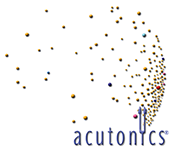Nolan Bade, PLA
Self-care and wellness are so very important in our day-to-day functioning. A major part of wellness is simply setting ourselves up in a positive and enriching environment. We can take steps to design and build wellness as it relates to sound directly into what architects call the Built Environment.
The term Built Environment is ubiquitous with our surroundings. It is the river in which human-centric space is created. It is the setting for human activity - created to fulfill human desires and needs. It is buildings, parks, neighborhoods, cities, and their supporting infrastructure, such as water supply or energy networks. It includes your home, backyard, your gutters, sidewalks, and laundry machines. In many cases, it is the price of “progress” and modern development. But it can be reshaped. 
Wellness as it relates to sound has sadly been left out of the conversation of the Built Environment. But if wellness is overlooked in the very spaces that envelop us – our homes, yards, and neighborhoods – many detrimental symptoms can arise. I think this is very apparent to most people. The list of possible symptoms is long, but at the core is the overall decrease in the use of our senses, higher levels of aggression, and an increase in rates of anxiety and depression. But we do have the power to unwind these patterns, harness the power of nature, and incorporate positively designed soundscapes into healing practices.
As we move from winter into spring, we move from a period of dormancy into new growth. Below are just a few principles to think about if we start extending sound therapy self-care to our homes, yards, and neighborhoods:
Harmonic Planting: Vegetation can be used strategically to absorb or deflect sound. Noise pollution from the outside can be tampered, giving rise to quiet, serene, and inward focused spaces in which to ground. Vegetation can be used to channel wind energy and increase patterns of circulation within the landscape.
Movement of Water: Water features have historically been used to mask unwanted noise, but they should be used in a sequence of amplifying beneficial and harmonic patterns, rather than masking unwanted ones. The frequency of water has the powerful ability to attract life.
Ground-covering: A nourished groundcover is a delicate dance between earth, water, and air. Moss, mulch, and pioneer plants absorb sound much more than hard surfaces like concrete, stone, and rock. They create a cooler, quieter environment by harnessing water, and expanding biodiversity.
Interfacing: Movement circulation can be programmed to increase interactions between people and elements like bird chirping, sunlight, moonlight, cricket chirping, etc. It is also important to foster spaces that are undefined or hidden, which reflect wildness and imagination and connection with a larger whole.

Self-care teaches us the importance of bodily autonomy, empowerment, and knowing your own health, but health and wellness also extends beyond the bodily vessel, to the home, yard, garden, and ecosystem. I look forward to sharing more detail on these principles and similarly threaded topics as we move further into 2024.

